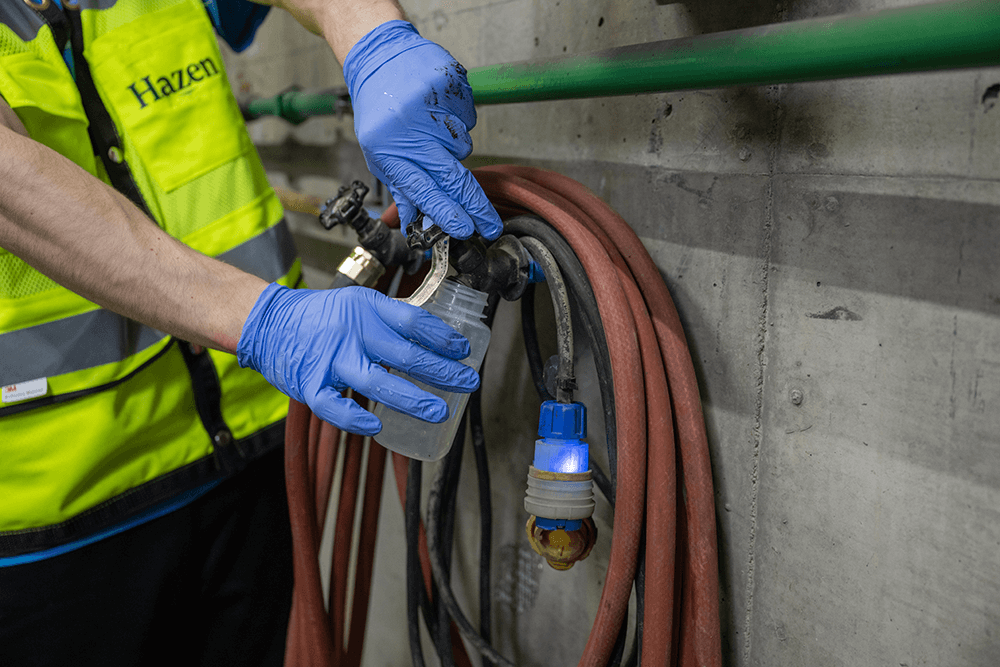
Study Highlights Transformative Potential for Biosolids Industry
The peer-reviewed study, supported by the Water Research Foundation, academia, and utility partners nationwide, analyzed PFAS pathways at Ecoremedy’s gasification facility in Edmonds, Washington—one of the first full-scale systems exclusively processing municipal solids. Using mass balance testing, researchers found:- 0% PFAS in the final FLGSand™ byproduct, a beneficial use material derived from treated solids.
- 5% PFAS in air emissions, projected 99% destruction with regenerative thermal oxidation (RTO).
- 15% PFAS in process water, projected 99% capture with activated carbon (GAC).
- Ecoremedy Fluid Lift ™ gasification can gasify the spent GAC to close the PFAS destruction loop.
“This is a major finding for utilities grappling with PFAS regulations,” said Mohammad Abu-Orf, Hazen’s Biosolids Practice Leader and study co-lead. “It’s the first full-scale gasification system to show zero PFAS in the end product and the first to quantify air emissions. With adjustments, we’re confident in achieving near-total PFAS destruction.”
Addressing an Industry Crisis
The findings arrive as the U.S. Environmental Protection Agency (EPA) evaluates the health risks of PFAS in biosolids, with draft guidelines suggesting limits as low as 1 part per billion for specific compounds. Over 50% of U.S. biosolids are land-applied as fertilizer, a practice now under threat. Ecoremedy’s technology offers a scalable solution to safeguard agricultural reuse while aligning with emerging state and federal regulations.
“We’re thrilled to provide the industry with actionable data,” said Dave Mooney, President and CTO of Ecoremedy. “But this isn’t just about PFAS. Our system slashes carbon footprints, cuts disposal costs, and generates renewable energy—all while transforming waste into a safe, reusable product.”
How Gasification Works
Ecoremedy’s gasification process heats municipal solids at high temperatures, converting organic matter into syngas for energy recovery and inert FLG Sand™. Critically, the system’s closed-loop design allows PFAS destruction in the thermal oxidizer, with residual contaminants addressable through proven treatment methods.
Beyond PFAS: Energy and Sustainability Benefits
The Edmonds facility operates auto-thermally, using exclusively self-generated heat to power operations, reducing energy costs and greenhouse gases. FLG Sand™ serves as a construction material or soil amendment, supporting utilities’ climate goals.
A Call for Collaboration
“Wastewater utilities don’t create PFAS—they inherit it,” Mooney added. “Our role is to help process these contaminants until society phases them out. This study proves we can.”
Abu-Orf emphasized the value of partnership: “Real-world data is essential. You can’t plan the future of biosolids management on lab results alone.”

